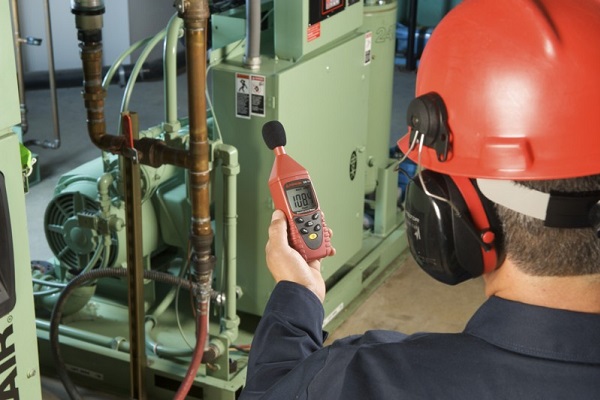18
Jun

When performing acoustic testing, it is crucial to choose the proper sound level meter. This is an extremely versatile device for measuring sound intensity, whether it is loud, soft, low-pitched, high-pitched, broad-band, intermittent or continuous. It has a large easy-to-read indicator to take quick measurements. The sound level meter measures the level of sound in decibels. According to HelloWebz and other relevant web sites, it can be used for:
The sensing microphone of the sound level meter is located at the end of the silver barrel at the top of the meter. Below the LCD, there are three switches which are marked S/F, MAX/RESET, A/C. Below them you will find the measurement/power range switch. The battery is located on the back of the sound level meter and a signal output terminal is on the bottom of the meter. The output of the terminal is sent to data collection interface. The LCD panel shows noise levels in decibels, and it also indicates low battery level. The sensor has a foam windscreen which helps reduce the detection of false high signals that can be caused by wind blowing across the microphone. The windscreen also protects the microphone from debris and dust. The sound level meter operates as a stand-alone gadget and by reading the LCD panel you can easily monitor sound levels. If you want to keep sound level data then you need to connect this device to a data-collection interface. The international standard that specifies the functionality and performance of the sound level meter is the IEC 61672-1. It specifies three kinds of sound measuring instruments: the conventional sound level meter, the integrating-averaging sound level meter and the integrating sound level meter.
Environmental measurements can be made anywhere where people spend a great amount of time, such as their homes. The DEQ noise standard uses statistical sound level values that are applied to residential measurements. Furthermore, another goal of acoustic engineers is to adjust a room for a specific purpose. A room tuned for lecture will be differently adjusted than a library. Therefore, the sound level meter can be used to investigate the acoustics in a room. One of the indications that a room has good acoustics is the length of time the sound stays in the room. Hard surface in a room allows the sound to “reverberate” for relatively long periods of time. On the other hand, soft surfaces dampen the reverberation. For example, if you clap your hands in an empty gym, you will hear a relatively long echo. However, if you repeat the experiment in a library, music room, or a concert hall, you will hear a shorter echo.